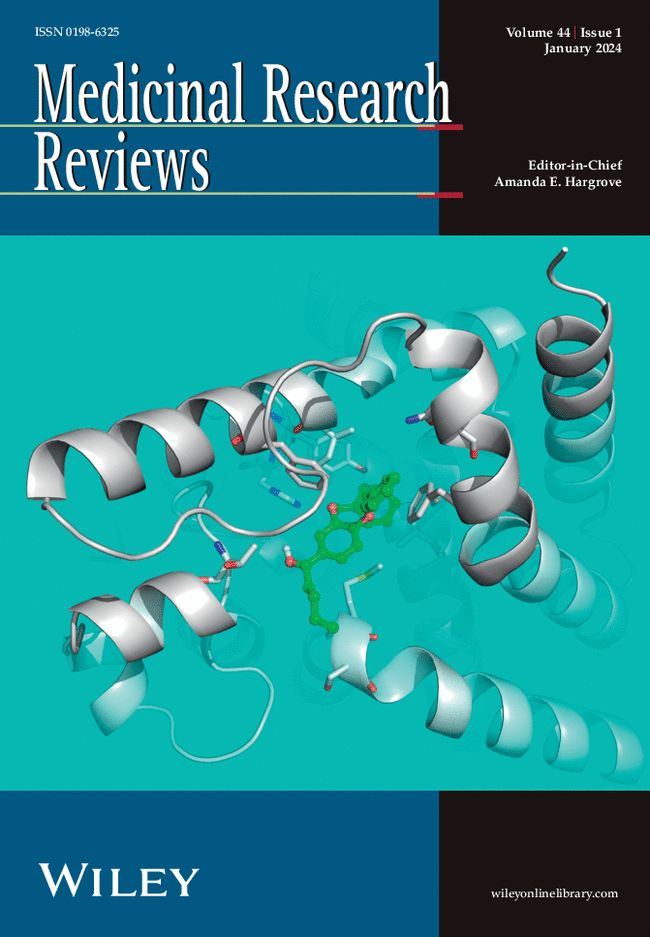打破壁垒;植物雌激素在对抗三阴性乳腺癌中的作用:一项综合综述。
摘要
在很短的时间内,针对一些不寻常的癌症,包括雌激素无反应的乳腺癌,开发标准药物有些困难。因此,考虑到目前的情况,植物雌激素可能是解开化疗药物的潜在候选者。本文综述的目的是全面介绍植物雌激素对三阴性乳腺癌(TNBC)的影响及其在不同TNBC模型中的相关细胞和分子途径。根据PRISMA指南系统检索数据,常用的工具和服务器为BioRender、ChemDraw professional 16.0、Schrodinger和ADMETlab 2.0。TNBC可能是由于Wnt/β-catenin、hedgehog、MAPK、notch、PI3K/AKT/mTOR、hippo、NF-κB和JAK/STAT信号级联等多种信号机制的失调而引起的。在所有植物雌激素(n = 150)中,48种化合物在一些体外和临床前模型中对TNBC有效。化疗药物活性通过多种机制调节,包括靶向信号通路,如磷酸化AKT、PI3K/AKT/mTOR、NF-κB、TNF-α;凋亡,如FASL、Bcl2、Bax、Bak、Bad、apfa1、ASK1、Capase、PARP;如MMPs (1,2,3,9), Wnt/-β catenin,血管生成(E&N Cadherin, Vimentin),细胞增殖(cyclin - a, B1, D1, E1和CDKs 1,6,7),炎症分子(TNF-α, NF-κB, IL-1β, IL-8),调节肿瘤抑制基因(p21, p27, p51, p53)和一些非特异性途径,如DNA损伤和修复(γH2AX, RAD51和存活),自噬(mTOR, ULK1和cathepsin B),表观遗传(HDAC1, DNMT1,端粒酶生成)和代谢调节(葡萄糖调节- glut1和GLUT4)。显示出抗氧化和许多其他途径。一些选择性植物雌激素通过调控EMT过程、信号通路、药物增敏、miRNA调节、改善药物摄取等途径,与常规抗癌药物及放疗等常规机制发挥协同作用,逆转耐药。纳米植物雌激素可以靶向TNBC细胞,刺激药物积累,提高药物疗效,使植物雌激素成为治疗TNBC的有效药物。此外,一项计算机药代动力学研究表明,植物雌激素具有合适的药代动力学特征,毒性较小。因此,在标准和完全有效的药物上市之前,植物雌激素可能是治疗TNBC的潜在候选药物。The development of standard drugs for some unusual cancers, including estrogen-nonresponsive breast cancer, is somewhat difficult within a very short time. So, considering the current situation, phytoestrogen may be a potential candidate for unraveling chemotherapeutics agents. The reason for this review article is to manifest overall information regarding the effects of phytoestrogen on triple-negative breast cancer (TNBC), along with its related cellular and molecular pathways in different TNBC models. Data was retrieved by systematic searches according to PRISMA guidelines, and commonly used tools and servers are BioRender, ChemDraw professional 16.0, Schrodinger, and ADMETlab 2.0. TNBC may be caused due to dysregulation of several signaling mechanisms such as Wnt/β-catenin, hedgehog, MAPK, notch, PI3K/AKT/mTOR, hippo, NF-κB, and JAK/STAT signaling cascades. Among all phytoestrogens (n = 150), 48 compounds are therapeutically effective on TNBC in some in vitro and preclinical models. Chemotherapeutics activities are regulated through varieties of mechanisms, including targeting signaling pathways such as phosphor-Akt, PI3K/AKT/mTOR, NF-κB, TNF-α; apoptosis such as FASL, Bcl2, Bax, Bak, Bad, apfa1, ASK1, Capase, and PARP; metastasis such as MMPs (1,2,3,9), Wnt/-β catenin, angiogenesis (E&N Cadherin, Vimentin), cell proliferation (cyclins-A, B1, D1, E1, and CDKs 1, 6,7), inflammatory molecules (TNF-α, NF-κB, IL-1β, IL-8), regulating tumor suppressor genes (p21, p27, p51, p53) and some nonspecific pathways like DNA damage and repair (γH2AX, RAD51, and surviving), autophagy (mTOR, ULK1, and cathepsin B), epigenetic (HDAC1, DNMT1, telomerase production) and metabolism regulation (glucose regulation-GLUT1 and GLUT4), showing antioxidant and many other pathways. Some selective phytoestrogens exert synergistic activities with conventional cancer drugs as well radiotherapy like as conventional mechanism and reverse drug resistance through regulation of the EMT process, signaling pathways, drug sensitizing, miRNA regulation, and improving drug uptake. Nano-based phytoestrogen can target TNBC cells, stimulate drug accumulation, and improve drug efficacies, making phytoestrogens more effective agents in treating TNBC. Additionally, an in-silico pharmacokinetics study reveals that phytoestrogen possesses suitable pharmacokinetic characteristics with minor toxicity. So, phytoestrogen can be a potential candidate drug against TNBC until standard and fully effective pharma drugs are available at markets.

 求助内容:
求助内容: 应助结果提醒方式:
应助结果提醒方式:


